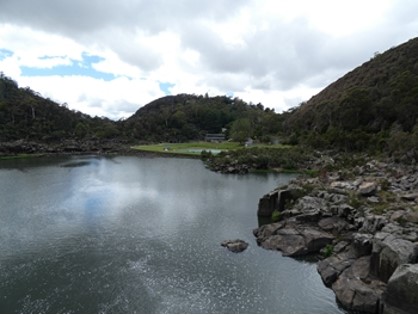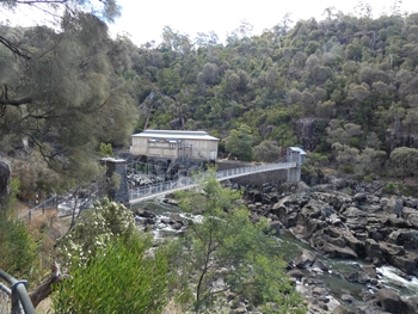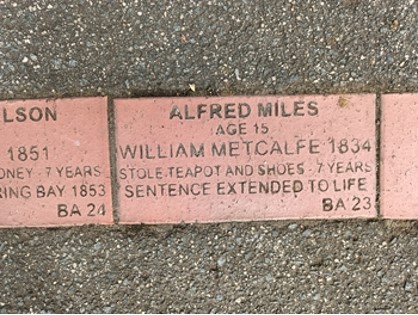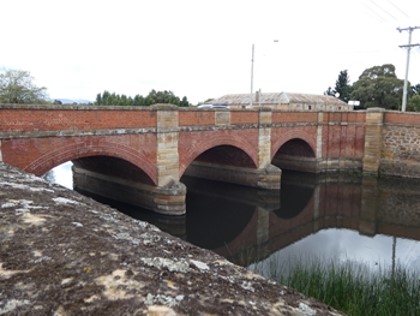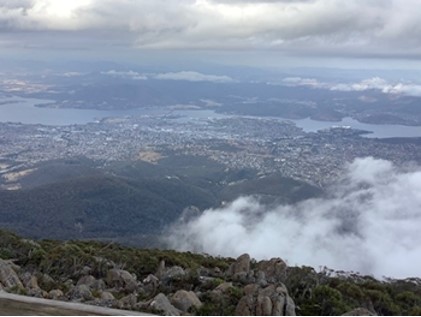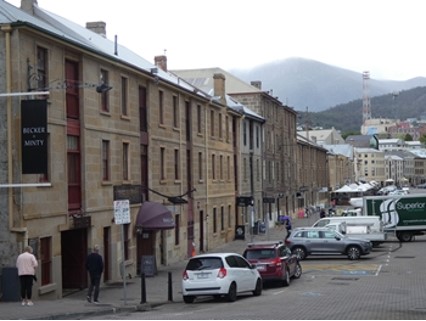Tasmania Road Trip - part 3. 42:49.7S, 147:18.2E

After our Platypus spotting at the Arboretum we headed south to Sheffield and another Air BnB. We were warned that we might see rat like animals around the bird feeder outside our room but not to be worried as they were Bandicoots and indigenous animals. Needless to say by the time we went to bed none had shown up. Apart from this comfortable room for the night Sheffield is known for its murals of local life on a number of walls in the town. It was raining heavily in the morning and didn’t inspire us to stand around taking pictures of paintings or to visit the improbably named Nowhere Else. Deloraine a short way down the road to Launceston has the only indigenous tour that Sarah could find on the internet, unlike New Zealand where the Maori culture is clearly present. This consisted of a short walk along the river, some displays of native plants and a Yarning/Healing circle of nine limestone boulders. We had hoped to see more given the culture that goes back thousands of years.
Yarning circle Arriving in Launceston (which they pronounce Lawn-ces-ton) in plenty of time and in need of exercise. We parked up above the Cataract Gorge Reserve. The Gorge and pool above it on the South Esk river were developed into a Victorian pleasure garden with a cliff walk and suspension bridge. It was being used while we were there by a local Netball Club for a training session and they were very energetically running up and down the paths and taking part in training exercises on the lawns. Other people were enjoying the sunshine or swimming in the pool. We went for a walk down the gorge and then up river to the remains of an hydroelectric power station. Apparently Launceston was the first city south of the equator to be lit by waterpower generated electricity. The water was brought from higher up the river through a tunnel and down a metal pipe to the generator room. This room, built well above the known flood level of the gorge, was unfortunately destroyed by a flood in 1929 but rebuilt again and back in use by 1930, it however didn’t supply enough electricity for the growing demand and from 1934 electricity was being bought in from elsewhere and the power station was decommissioned in the 1950’s.
Looking across First Basin from the Victorian Pleasure Gardens to the more modern swimming pool, there is a chair lift which carries people across here.
Looking down the lower part of the gorge from the modern walkway, the original walkway created in the early 1900’s would not have been so sturdy.
The power station in the upper gorge Again we used Air BnB for our accommodation and met another friendly couple who ran it, we really have found some nice places to stay. This was a Federation House. Federation is an architectural style in Australia from 1890 – 1915 and refers to the Federation of Australia in 1901 when the Australian Colonies became the Commonwealth of Australia and the house had a number of original features. It is not always the case that Air BnB’s provide breakfast but we have been lucky with the three we have used on this trip that not only was food provided for us to make our own breakfasts but it was delicious. After Launceston we were heading back down to Hobart. This route down Highway 1 bypasses a number of small towns but we pulled off a couple of times to break the monotony of fast road interspersed with road works. At Campbell Town there is a Convict Brick Trail which stretches along both sides of the High Street. It commemorates some of the almost 200,000 convicts who were transported to Australia over a period of eighty years. Each brick gives the name of a convict, their age, ship and arrival date, their crime and sentence.
I wonder why his sentence was extended.
Also in Campbell Town is the oldest surviving brick arch in Australia. Designed by a convict and of course built with convict labour. It was built on dry land and the river then diverted to flow under it.
While building the bridge the convicts were housed in the cellars of the local coaching inn, today these house a wonderful bookshop. We considered making a detour as we headed south to go across through an area of lakes and then down the A5 as a change of scenery but after a short distance the C road we were on changed from tarmac to gravel and we didn’t fancy a possible 50 kms on gravel road! We arrived back at Serenity in the late afternoon. We still had some sightseeing to do while we had the car, Hobart Town and Mt Wellington.
We drove up Mount Wellington one evening to try and get views while there were few clouds as it seemed to disappear into the clouds everyday. Looking down on Hobart.
Hobart grew up from around the docks and these buildings on Salamanca Place were some of the original warehouses, now shops and restaurants. On Saturdays the Salamanca Street Market is held here.
Wonderful impressive buildings are all over Hobart, built by convict labour and often to convict designs.
Hobart Town Hall. |

